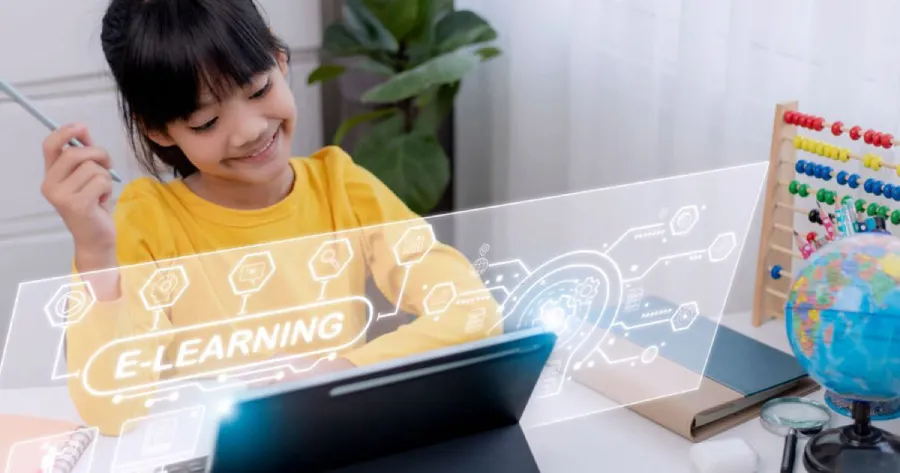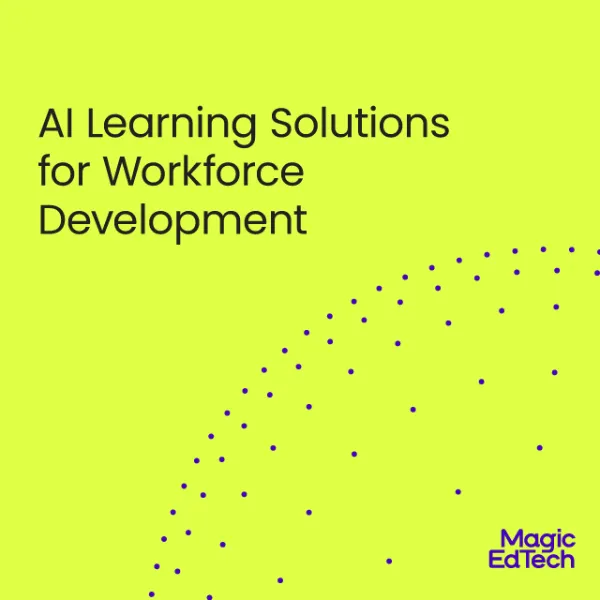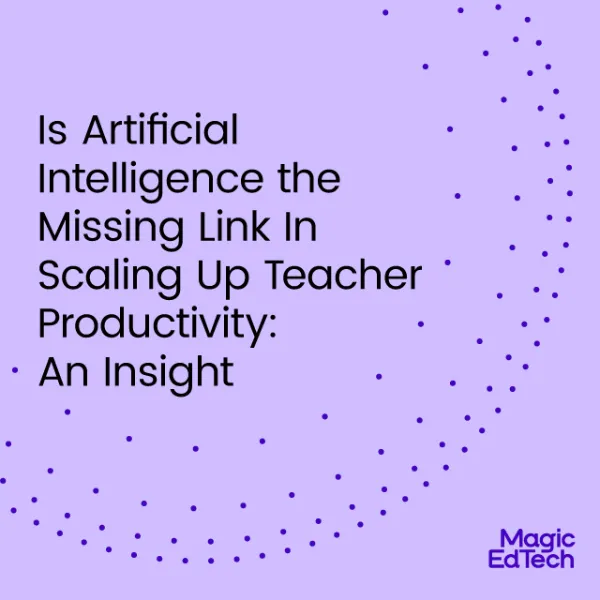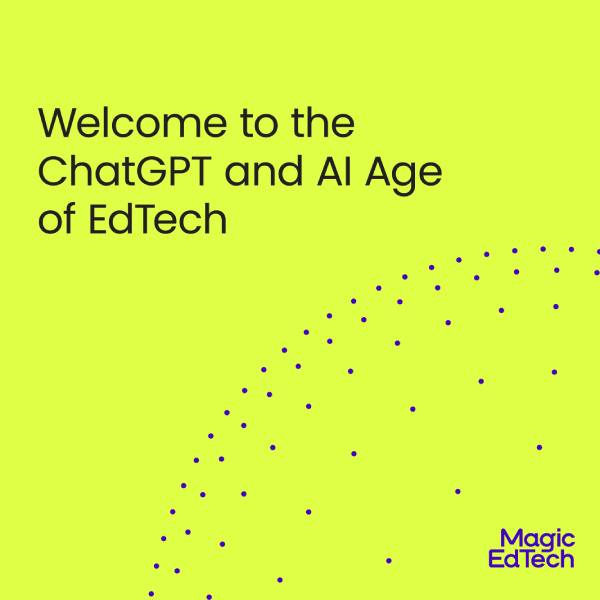AI: Redefining Learning Assessments and the Education Landscape
- 2 June, 2023
- Reading Time: 8 mins
We find ourselves in an exhilarating era of educational technology, where the sudden emergence of numerous AI tools in late 2022 caught many off guard and caused some unease. While these tools may not fit the conventional definition of “educational technology,” it’s not difficult to imagine how they could be used to bypass the traditional educational process. Understandably, a few educational institutions have responded by banning the use of these tools in teaching and learning environments, given their potential to disrupt established methods. This trend is likely to continue in the foreseeable future. However, are we considering what happens beyond a ban?
- Are we preparing for the inevitable growth of AI in education?
- Are there discussions addressing where AI is most likely to enter the education system?
These questions abound, but it remains uncertain if anyone is actively working toward answers.
Some thoughts on the trajectory of AI in education:
Speculating about the trajectory of AI development allows us to make informed guesses about its initial impact on various industries, including education. Informed by this speculation,
I predict that AI will first be adopted in the field of evaluation within education. More specifically, AI will make headway in summative assessment and may eventually extend its reach to formative assessment as well.
I base this prediction on the fact that effective AI relies on data points, and education excels in using data to measure achievement. Moreover, most teachers are not particularly fond of the task of correlating and presenting assessment data.
If an AI could efficiently analyze and grade a volume of essays on the industrial revolution in one go, for example, many teachers would eagerly embrace such a tool.
Evaluating subjects like math and science would be even easier for AI. In fact, it is likely already feasible to develop an AI capable of performing such assessments. Combined with a rubric for measuring writing against specific criteria, an AI-based assessment tool would be exceptionally powerful. What we need is someone to consolidate the existing assessment tools into a comprehensive AI system, which would have far-reaching implications for education.
- But what lies beyond assessment?
- What is the ultimate goal of AI in education?
Any aspect of education that can be compared to a database of expected cognitive skills based on age and cross-referenced with learning outcomes by grade could be assessed by AI. The programming algorithms needed to accomplish this would not be overly complex. However, acquiring the necessary data to fuel this AI system may pose a challenge, as I will discuss later. Once such an AI system is within reach, I believe the first area where AI will manifest within the education system is assessment. However, this is not the endgame for AI in education.
Ultimately, I envision a future where each student is assigned an adaptive education AI score (AEAI) upon entering the education system.
This AI would assess the student’s K-12 journey, cataloging, weighing, and measuring every piece of work submitted. It would evaluate the student’s progress, identify areas for improvement, and assess individual strengths, creativity levels, original ideas, and biases in thinking. Moreover, the AEAI score could detect potential learning difficulties or mental health issues, alerting educators and parents to areas that require monitoring. By the time a student graduates from grade 12, their personal AEAI score would have built a comprehensive portfolio showcasing their skills and academic abilities. When applying for further education, students would submit their AEAI-generated profiles to the admissions offices of their desired institutions, and acceptance or rejection would be based on these profiles.
Assuming every child has an AEAI score, education would undergo a revolution, as the human element would be removed from the assessment process.
This is not to suggest that teachers assess their students poorly, but assessment methods can vary greatly among teachers. While there are learning standards, benchmarks, and criteria that teachers apply when grading, various factors can influence the final grade. Teachers juggle multiple responsibilities outside the classroom, and relieving them of the burden of assessment through AI would be life-changing. Fortunately, AI is not yet poised to take over the instructional aspects of teaching, as we still value person-to-person interaction in the classroom. If AI assumes the assessment role, teachers would have more time to focus on their instructional practices, enhancing learning outcomes and fostering greater teacher and student satisfaction.
The AEAI would alleviate teachers from the tedious and time-consuming aspects of teaching and learning that many teachers already dislike. This is why I believe AI will initially enter the education system through assessment.
Some points to ponder over:
However, certain obstacles could impede the realization of this vision.
The foremost concern is privacy. In the early days of the Internet, student privacy was not a significant consideration, and innovative digital tools were enthusiastically adopted in the classroom. However, as it became clear that the internet posed risks to personal information, stringent privacy protection rules were implemented to safeguard students’ data during online educational activities.
For any AI system to function effectively, it requires data. In the case of my prediction, the AI being used would need samples of student work across various grade levels and subject areas, ranging from exemplary to barely acceptable. This database would form the foundation for evaluating new submissions. The more samples available, the more robust the AI system becomes. To populate this database, when a student submits their work, it would undergo evaluation, ranking, and subsequent inclusion in the database. The AI would assess the work based on expected learning outcomes and compare it with the work of previous students. The AI assessment could provide grades based on the extent to which the learning outcomes are met or by comparing the work to samples in the database.
However, the challenge lies in ensuring that each piece of student work is anonymized to remove personal identifiers, turning it into an anonymous data point. Undoubtedly, concerns about the ethics surrounding such a database would arise among educators, students, and parents.
This leads us to the next significant obstacle: educational ethics.
Even if an AI system could more accurately assess student work, the implementation of such a tool would necessitate breaking an age-old social contract between students and teachers, which is built on trust. Assessment is not merely about right and wrong or meeting certain criteria—it involves understanding the whole student. It is doubtful that an algorithm can capture the depth of assessment required in such a context.
Finally, equity of access poses a challenge.
How can we ensure that this technology is applied equitably across the K-12 student and larger learning population? Presently, we struggle to ensure equitable access to basic technologies among schools, with some regions lacking reliable internet connections, let alone access to the necessary technology for implementing AI assessment tools. Additionally, envision the complications that post-secondary institutions would face when deciding which students to accept based on assessments by either humans or AI. Would we witness the emergence of a two-tier assessment system, where students who agree to AI assessment receive preferential consideration for higher education admission? The equitable application of such technology would undoubtedly be at the center of objections to its use.
At Magic, we are deeply involved in this transformative process and aim to leverage the potential of this emerging technology to enhance educational products for students, teachers, and learners worldwide. In order to address this challenge responsibly, we have developed an ethical framework. As we prepare to utilize this technology to revolutionize the edtech industry through Magica11y, we remain committed to our mission. I’ll probably share more on this in a different article soon.
So, when can we expect these developments to materialize? The short answer is that some AI tools are already here, while others are still a long way off. The idea of a PEAI for every child is likely a distant reality, however, we will undoubtedly witness a fragmented assortment of AI tools introduced into the education system in the coming years. The main challenge will not necessarily lie in the capabilities of these tools but in the lack of input from educators in their development. Over the past 20 to 30 years, teachers have often been presented with new technologies touted as revolutionary for education, without their input or needs being adequately considered. This disconnect between teachers and technology implementation has been a longstanding issue. Unfortunately, it doesn’t appear that this dysfunctional relationship will change significantly as AI continues to advance.
In Summary,
AI is poised to impact the field of education, particularly in the area of assessment and potentially content-related peripheral works like – alt text, proofreading, etc. The initial focus will likely be on summative assessment, with potential expansion to formative assessment later on. AI’s ability to analyze vast amounts of data makes evaluation an attractive application. However, challenges related to privacy, educational ethics, and equitable access must be addressed before widespread adoption can occur. While AI may revolutionize assessment, the instructional aspects of teaching are unlikely to be fully taken over by AI in the near future. The introduction of AI in assessment would free up teachers’ time, enabling them to concentrate on instructional practices and improving learning outcomes. The journey toward AI implementation in education is still unfolding, and its precise trajectory and timeline remain uncertain.






